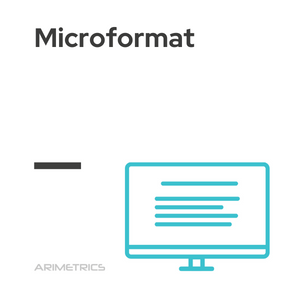
Definición:
Microformats are snippets of code that provide structured information about a website, indicating to search engines the type of data they contain. They function as“tags” for different sections of web content. For example, if the physical address of a business appears on your page, microformats can specify that this is the street of the business, this is the city, this is the province, and this is the zip code.
Likewise, if a website includes book reviews, microformats can identify the book title, user rating and other useful information, making it easier for search engines to understand the content.
Origin of Microformats
Microformats emerged as an agile movement, driven by an active community, in response to the “passivity” and slowness of standardization bodies such as the W3C. Their main objective is to approach the semantic web in a simple and untraumatic way. They do not require new technologies, since they are based on existing XHTML, specifically on the attributes that tags can have. From this base, existing formats are used to integrate them into the web, avoiding drastic changes and limiting themselves to modifying key attributes.
Common examples of Microformats
Microformats are useful tools for structuring information on the Web. Here are some of the most common microformats:
- hCard: This microformat is used to mark pages containing data about a person or organization. It includes information such as first name, last name, telephone number, e-mail address and physical address. It can also include additional details such as birthday, a photograph and a nickname. hCards facilitate the creation of digital contact cards that can be easily extracted by applications and services.
- hCalendar/Event: This microformat is especially useful for referencing events that will occur at a specific date and time. Not only is the date and time of the event marked, but also relevant information such as the location where it will be held, a summary of the event theme and a link to more details. This allows search engines to display event information more effectively and attractively.
- hProduct: This microformat is particularly relevant for e-commerce, as it allows you to categorize and define products in a structured way. It includes details such as product name, description, price, availability and associated photo. By using hProduct, retailers can improve the visibility of their products in search engines, making it easier for consumers to find what they are looking for.
- hMedia: This microformat is used to provide information about multimedia content, such as images and videos. It allows search engines to better understand visual and audiovisual content, which can improve the indexing and presentation of these elements in search results. Appropriately tagging multimedia content makes it easier to discover and increases the likelihood that users will interact with it.
